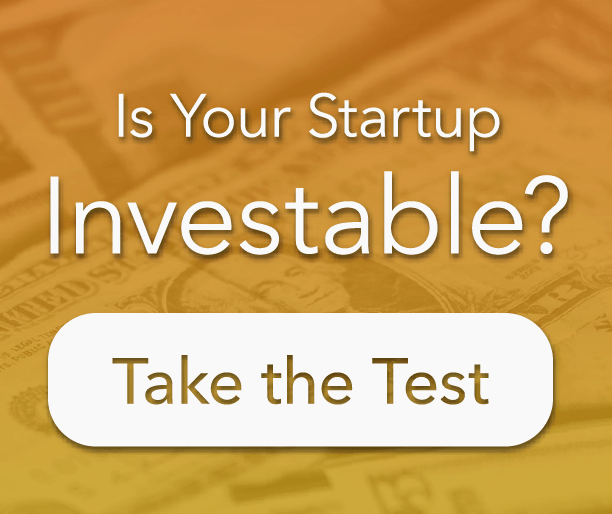
“Sweat equity is the best kind of startup capital.”— Mark Cuban
This is a huge question for startup founders. If you are a founder, you know what I am talking about: how much of my startup should I give away?
Scenario
You have this great idea. It looks like it is going to do really well. The only problem is, you have neither the capital nor the skill to build it. Such is the curse of the entrepreneur (too many ideas with not enough time, money, and talent to act on them).
But you must build it so you begin looking for the money and the talent, and you choose to sleep less.
Investors (the money) and engineers (the talent) also do not have a lot of time to give to you unless you make an offer they cannot refuse. But, Dave, you say. I do not have the cash, remember?
Ah, but you have the idea! See, the idea and the passion to bring it to life is what the investor and engineer lack. This is where they need you. However, it is up to the entrepreneur to get everyone onto the boat. So how does he do it, without cash?
An entrepreneur distributes equity shares of the startup company as value to investors and team members.
By spreading out ownership between the key players involved, the entrepreneur motivates everyone to see it pay off, which puts everyone in the same boat driving in the same direction. This leads us to our main question:
How much startup ownership should I give away?
This question du jour is highly contingent upon who you are giving it to. Below, we have broken it down into three categories:
- Co-founders
- Engineers, software developers, and other technical builders
- Investors
Co-founders
A co-founder may be your friend who was there when you first came up with the idea, another entrepreneur you have partnered with before, a relative, a technical co-founder, etc. It could be anyone. How should the ownership of the startup be split among co-founders? The answer to this question becomes more apparent when you ask the following questions:
Who is going to drive it? Who has put the most time, energy, and money into it? Who is making this a top priority in their life? This person will be the CEO, and should, therefore, keep the majority of ownership.
How To Handle the Legal Paperwork While Organizing A Startup.
Quick note: the number of stocks a startup issues (could be tens of millions) is meaningless — only percentage matters.
For example, Jack and Jim come up with an incredible idea and write out a business plan. It looks very promising. They both have full-time jobs and spouses. Jack quits his full-time job to grow the startup while Jim keeps his full-time job. Jack should get the majority ownership over Jim because Jack is putting more at risk. After negotiating, Jack and Jim settle on a 70-30% split.
Co-founders: here are a few pro tips to keep in mind when negotiating equity early on:
- No more than three co-founders. If there are 5–6 of you, start negotiating heavily. Serial entrepreneur and consultant, Stever Robbins, said, “ By the time of harvest (IPO or acquisition), the founding group can expect to own about 20–30% of the company. With one founder, that can mean riches. With several founders, that may mean splitting the pie into so many pieces that no one is happy with the value of their piece.”
- Two founders — do not split 50–50. While it sounds fair, equal ownership can eventually destroy a company, because decisions cannot be made between two people who disagree.
Partner Salary Agreement – 4 Questions to Mitigate Partnership Failure
Engineers, software developers, and other technical builders
How much ownership should the entrepreneur give to the engineer behind the startup? This is a huge question because the startup will remain just an idea without someone to build it.
I sat down for lunch with a San Francisco software developer who runs an agency that provides engineering services for startups and businesses. I asked him this question, “If I were to launch a startup that required a mobile app and I do not have the cash to pay the $125/hour rate for your services, what kind of ownership percentage would make it worth it to you as a developer to build the app?
He said two things that were brilliant.
- “First, show me the skin you have in the game. Show me mockups, market research, a business plan, design wireframes, and a launch strategy so that I know this is going to go somewhere and you are not just going to abandon me halfway down the road. Because I see this all the time — an entrepreneur gets an idea for an app, approaches a developer to partner, the developer agrees and invests his time writing the code, while the entrepreneur waits, and then two months down the road, the developer finds out the entrepreneur has moved on to something else, and the developer is left alone with incomplete code and wasted time. Don’t do that.”
- “Second, keep me motivated. If this startup really takes off, I want to be rewarded for doing my part. A 10–20% stake in the company and a small cash incentive would make it worth it for me and would motivate me to do the best job I can building your app.”
Of course, this is one person’s account and should not be considered the industry standard. All equity splits are negotiated on a case-by-case basis.
Investors
Investors are looking to inject money into your startup in the expectation that the startup will grow and eventually be harvested through either an acquisition or an IPO. In either exit event, a cash value is assigned on a per share basis, which creates the return investors (and all owners) are looking for.
How “Shark Tank” Revealed the Difference Between Gross Profit Margin and Net Profit Margin
For example, two co-founders incorporate their startup with 10 million shares, splitting the ownership 60–40%. The beta product launches successfully and is ready to scale, so the co-founders begin pitching to angel investors for $2.5 million of early-stage money. One angel group is interested in a 20% stake for the $2.5 million, creating a post-money valuation of $12.5 million. The co-founders agree, also creating an option pool as part of the process:
- Co-founder #1: 36% or 3.6 million shares ($1.25/share) or $4.5m
- Co-founder #2: 24% or 2.4 million shares ($1.25/share) $ 3m
- Angel group: 20% or 2 million shares ($1.25/share) $2.5m
- Option pool (for future employees): 20% or 2 million shares ($1.25/share) $2.5m
In this scenario, the co-founders still control more than half of the company. However, as the company grows to require mezzanine financing through VCs, the founders and angels positions and option pool will be diluted (assuming no non-dilution agreements and/or reloads of the option programs exist, etc.) . A good rule of thumb is for a founding team to hold onto 25% of their company through the exit.
Distributing ownership of a company is a powerful tool for startup founders to utilize for optimal growth. Be careful and play a conservative game, don’t give away too much or it could result in losing your company.
Buy-Sell Agreement – What, Why and How?









